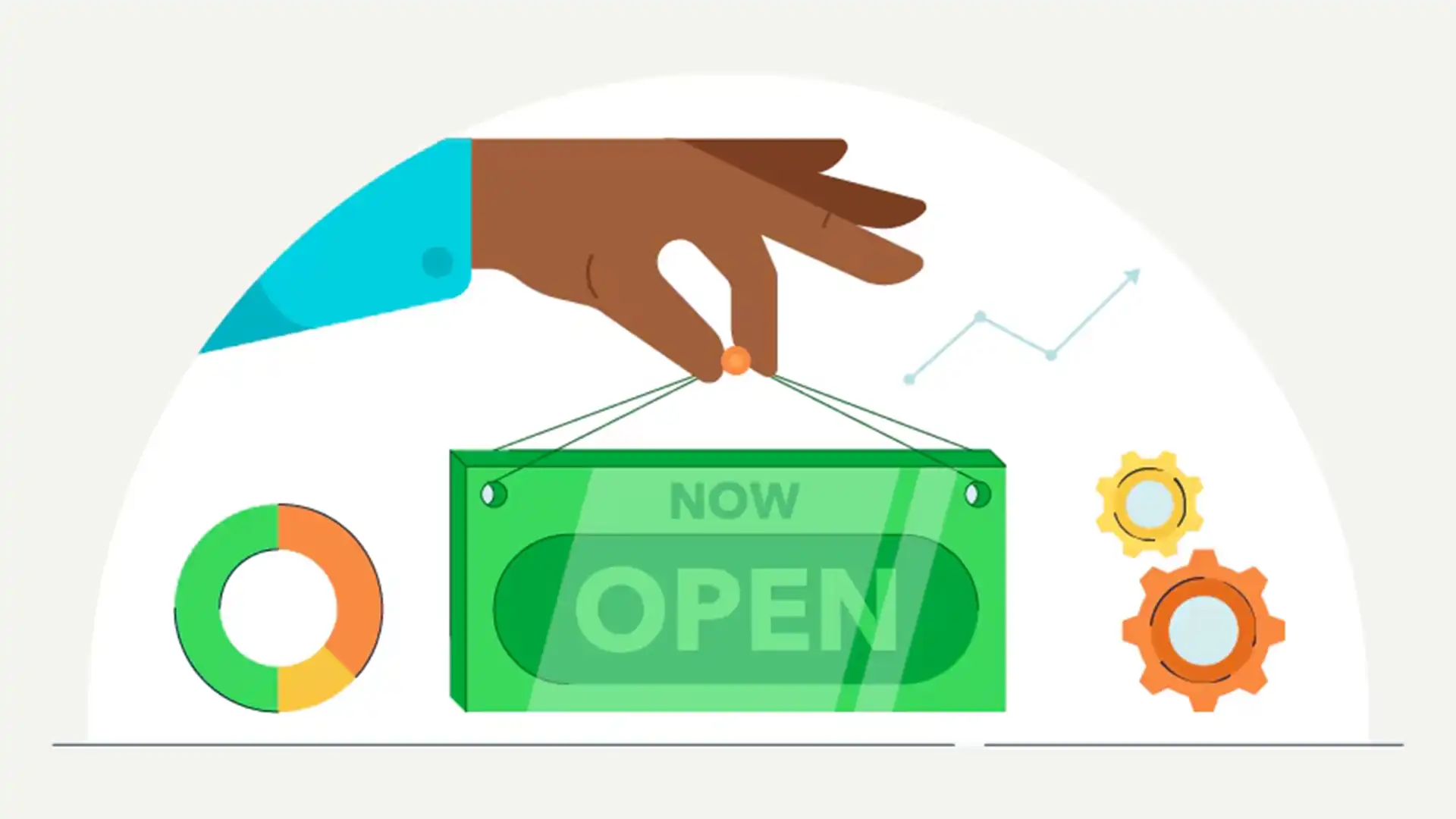This article was originally published on the Intuit QuickBooks blog.
We’ve all dreamt of starting our own business at one time or another. According to a recent QuickBooks survey, over half of Americans say that digital technology has made starting a new business possible—and easier than ever to figure out how to start a business with no money.
Today, it’s faster and easier than ever to get your business up and running without the need for funding. Let’s look at the eight steps it takes to start a business with no money—turning your existing skill set into a successful business on a shoestring budget:
1. Find your free business idea
The first step is to find a free (or low-cost) business idea. There are many different business ventures you can embark on with little to no capital needed. Here are a few easy ideas to help get your business ideas flowing:
- Creative businesses: Freelance writing, graphic design, social media management
- Online businesses: Affiliate marketing, dropshipping, e-commerce
- Service businesses: Consulting, event planning, landscaping
Instead of trying to live off your savings or a credit card, consider keeping your day job or going part-time until you get your business in a comfortable financial position.
To determine if you’re in a position to comfortably leave your day job, consider the following:
- Do you have enough savings to cover your living expenses for several months without income? The general recommendation is 3-6 months, but having more can provide peace of mind.
- How much debt do you have? Managing small business debt is important as high-interest debt can eat into your savings quickly.
- Will you have any other income besides your job? This could include freelance work, a partner's income, or investment income.
Having a steady income as your business grows will allow you to be more flexible with your business finances.
2. Write a realistic business plan and budget
A business plan helps outline your goals and how you can reach them. It includes the key aspects of your business, such as your company description, business model, market research, products and services, and finances.
The finance and budget part of your business plan outlines how you manage startup costs and maintain cash flow.
Typical startup business expenses include:
- Rent
- Office furniture and supplies
- Labor
- Tools and equipment
- Raw materials
- Opening inventory
- Website design and hosting
- Advertising or promotions
- Software
- Insurance, licenses, or permit fees
Determine what expenses are the most necessary to operating your business, what you can do without, and how much money you’ll need to set aside for each expense. This can help you determine how much additional funding you will need.
3. Network and leverage free resources
Starting a business with no money means networking and engaging with the small business or entrepreneur community. You can do this through online platforms, social media, or local business groups. You may also choose to find a business mentor to help guide you.
There are also plenty of free online resources that can help. For example, mentorship programs and learning materials. Some helpful websites that offer a ton of free resources include:
- Service Corps of Retired Executives (SCORE)
- Small Business Development Centers (SBDCs)
- US Chamber of Commerce
- QuickBooks tools and resources center
These free tools and resources can help you minimize spending so you can focus on building your business. However, you can also enlist the help of friends and family to support your business.
4. Create a website
When thinking about starting a business, you’ll need many things, like inventory and marketing materials. However, most modern businesses, whether it’s a landscaping company or a woodworking solopreneurship, can benefit from a website.
You can use free or low-cost website builders to create a professional website that includes information about your business, products or services, and contact details.
5. Make a marketing plan
Building a marketing budget for your low-cost startup plan is the next step. A marketing plan should support building your online presence through your website, blog posts, social media, and other areas to reach customers.
Your marketing plan should detail how you’ll promote your business to your target market, whether it’s via social media, public relations, or website optimization.
6. Build your brand
After building out a marketing plan, it’s time to start building your brand. You can analyze your competitors' websites and social media for free to identify any gaps in the market that your brand can fill. You can also ask friends and family to try out your product and give you feedback.
When first figuring out how to build a brand, you’ll want to outline your mission, values, and brand voice. Other brand-related considerations include your logo and imagery. Your brand guidelines can help inform your business strategy as it grows, including your social media marketing, hiring practices, and communication style.
7. Validate your business
Before spending all of your money on inventory or building out other aspects of your business, you should validate your business idea. To do this, you can use preorders or other methods like:
- Create a landing page that explains your product or service and includes a call-to-action to allow visitors to get email updates or pre-order notifications.
- Conduct surveys or interviews with your target audience to understand their needs and pain points.
- Use pre-order marketplaces to sell your new products and connect with early adopters.
- Try pop-up events and shops at local markets, industry events, or trade shows to showcase your idea and collect pre-orders in person.
- Run crowdfund campaigns to showcase your product and collect pre-orders.
When validating your business idea, offer incentives and build hype. For example, you can use early-bird discounts, exclusive bonuses, or limited-edition items to encourage pre-orders.
8. Get funding
Once you validate your business idea, you can consider raising funding to grow your business further. For example:
- Crowdfunding is the process of raising funds from potential customers for a project or new business venture through crowdfunding platforms.
- Funding from friends and family is a common source of financing that many use to help get their business off the ground.
- Small business loans, like those from the SBA or term loans from QuickBooks.
- Grant programs from government and private sources that you don’t have to pay back.
Nearly 60% of small business owners use credit cards to temporarily fund their businesses, according to a recent QuickBooks survey. If you have a good credit rating, this can be a faster and easier way to get a loan, as you don’t need a business plan and don’t have to go through a lengthy application and underwriting process. The downside is that interest rates can be very high.



















